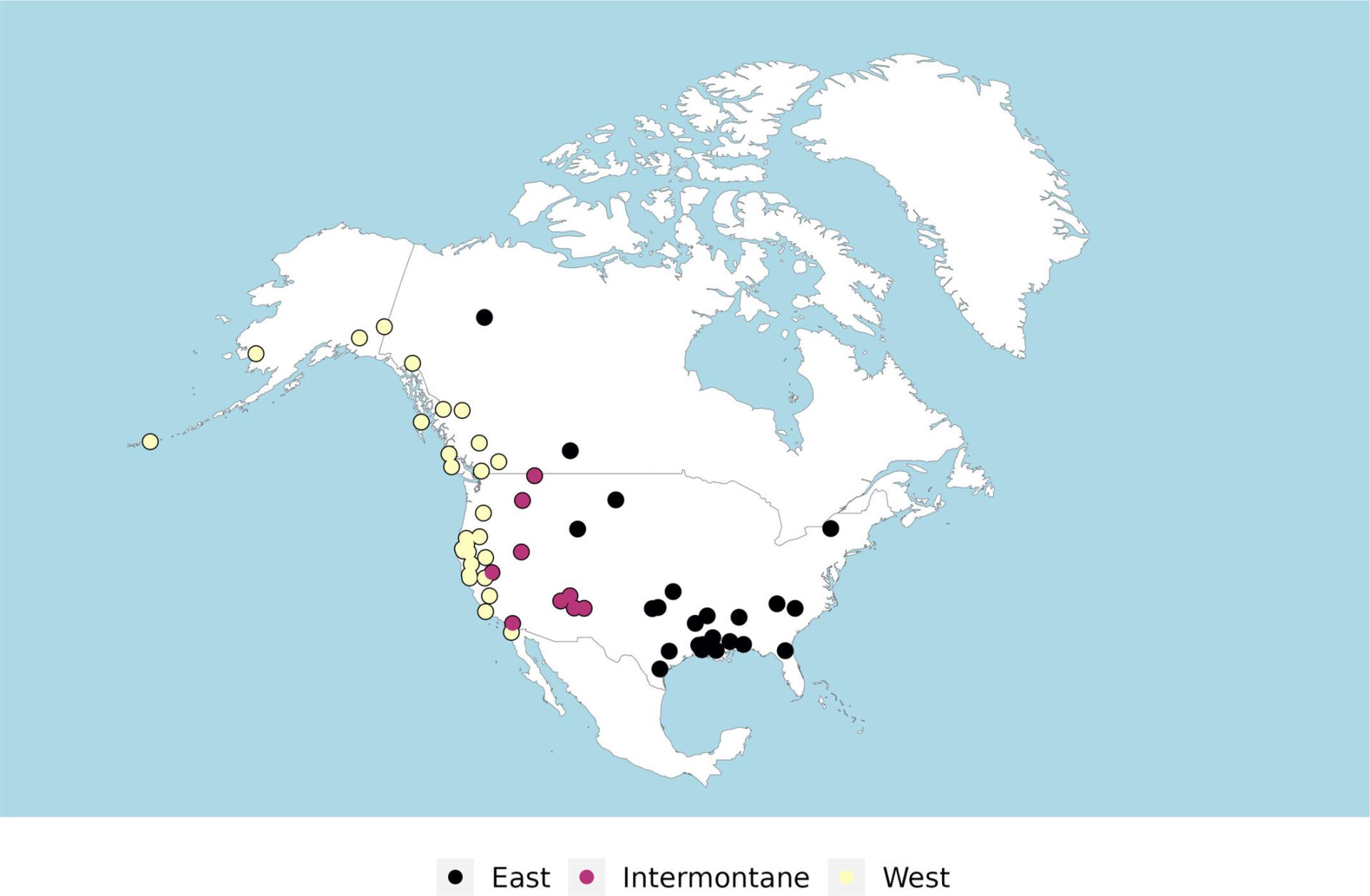Bob Yirka , Phys.org
Source - First languages of North America traced back to two very different language groups from Siberia (phys.org)

Geographical locations of languages in sample. The large blank region in the east is due to the wide distributions of four families (Eskimo-Aleut, Athabaskan, Algonquian, Siouan), which are represented elsewhere in the sample. Credit: American Journal of Biological Anthropology (2024). DOI: 10.1002/ajpa.24923
Johanna Nichols, a linguist at the University of California, Berkeley, has used her pioneering work in the field of language history to learn more about language development in North America. She has found that it can be traced back to two language groups that originated in Siberia. Her paper is published in the American Journal of Biological Anthropology.
Over the past several decades, scientists have learned more about the people who originally populated North America, and by extension, Central and South America. One characteristic of these people has remained largely a mystery: the evolution of the languages spoken by people living in what is now Canada, the U.S. and Mexico.
For this new study, Nichols used statistical techniques she developed to trace language lineage back to the earliest inhabitants of North America, going back 24,000 years.
Nichols' techniques involve the use of linguistic typology, a field that involves comparing languages and organizing them based on shared criteria. To learn more about early North American languages, she compiled lists of language characteristics and applied them to all known languages. She then scored each of the languages based on the revealed qualities. This allowed her to compare the languages as a way to find resemblances among them and spot patterns.
Nichols found that she could trace the languages spoken in early North America back to just two lineages, both of which originated in Siberia. They came, she notes, with the people who made their way across land bridges during Ice Age glaciation events.
Those two main groups she found evolved into different languages as people moved to different regions—she focused most specifically on 60 of them. She found that many of those languages were also impacted by multiple waves of Siberians arriving in North America.
She concludes that some of the characteristics of the original languages have been retained through the years and are now in the current linguistic population.
More information: Johanna Nichols, Founder effects identify languages of the earliest Americans, American Journal of Biological Anthropology (2024). DOI: 10.1002/ajpa.24923